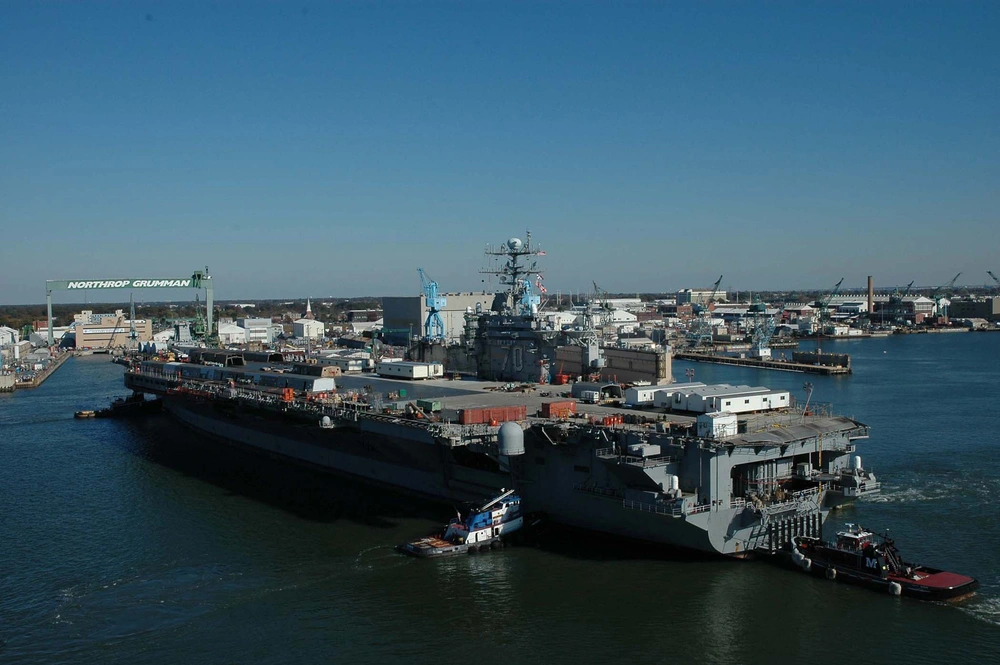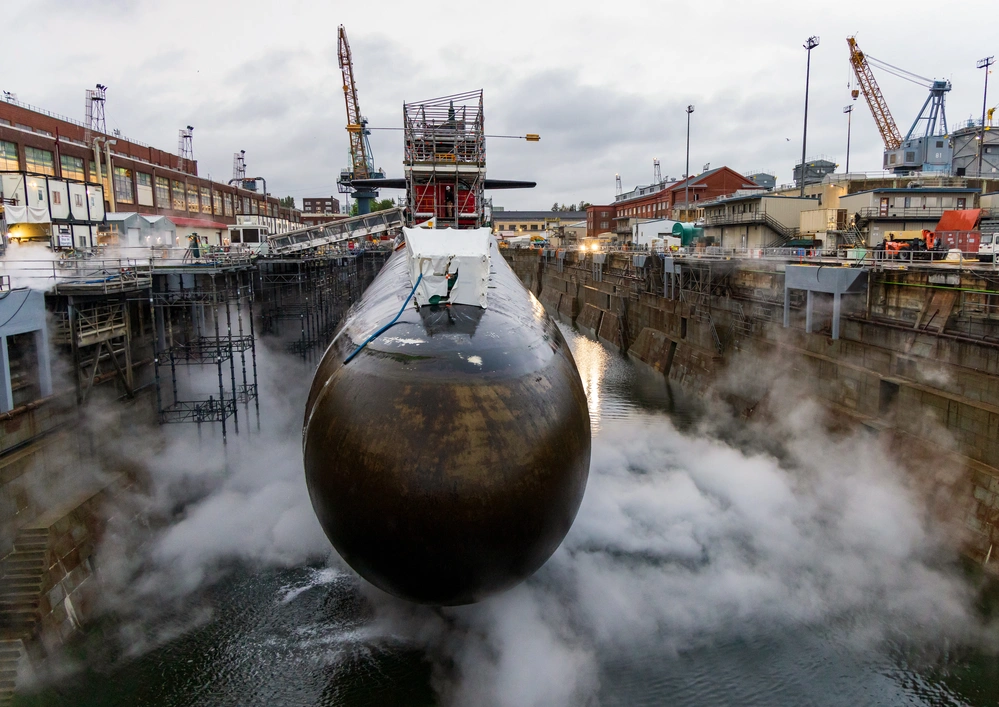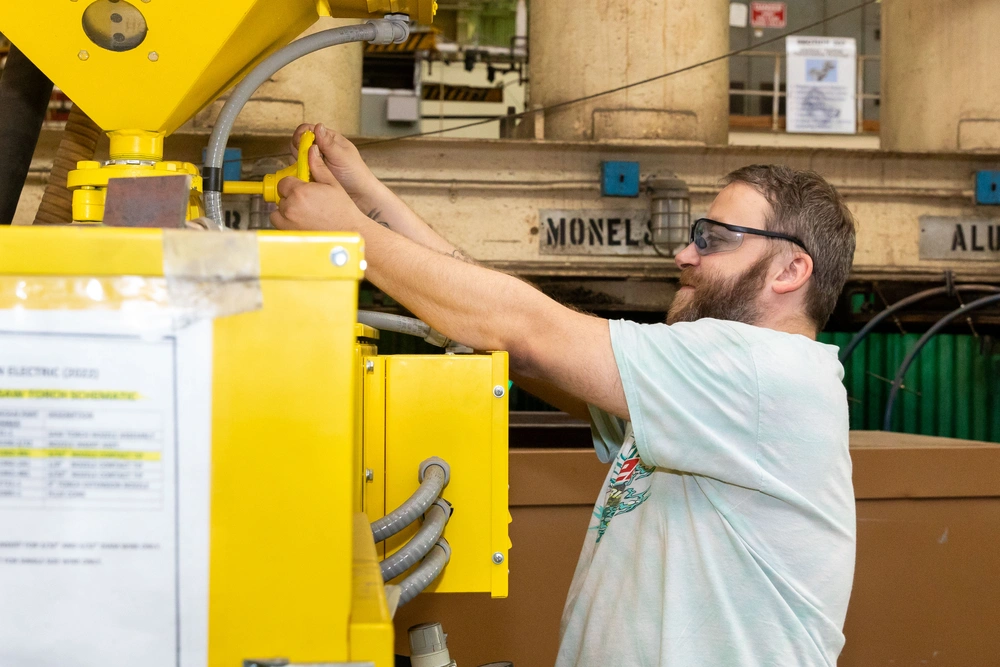Big tech is trying to hack shipbuilding for the Navy. Will it succeed?
- By Hope Seck
Share This Article

For nearly a decade, the Navy has been sounding a clear call for more ships – a lot more ships. The 355-ship Navy sounded like an ambitious goal when it was outlined in a report to Congress in 2016. And despite billions every year flowing into shipbuilding since then, the goal seems almost as far away as ever. As of the end of July, there are 293 active Navy ships; in 2016, when the goal was announced, there were 308.
The decline is because of ship retirements, including some unplanned decommissionings involving many of the early littoral combat ships and the amphibious ship Bonhomme Richard, which suffered a catastrophic fire. There are also severe limitations on how quickly the fleet can grow; these are linked to supply chain limits and the limited capacity of U.S. shipyards, which are also suffering concerning shortages in their skilled workforce.
The White House has been clear that shipbuilding is a priority, and a new tech alliance is on a mission to solve current problems and get the Navy back on track. In early July, the Texas-based nonprofit integrator BlueForce Alliance announced a partnership with defense technology titan Palantir Technologies to launch Warp Speed for Warships, an initiative “focused on powering high-velocity shipbuilding, sustaining a powerful fleet, and reestablishing American maritime dominance.”
The name comes from Palantir’s Warp Speed, an AI-powered operating system designed to accelerate American manufacturing. Warp Speed for Warships will use the same operating system to better link “the network of shipbuilders, suppliers, and critical partners responsible for building and sustaining the Navy’s fleet,” according to a joint BlueForge/Palantir announcement. The idea is that being able to better see across silos and form a single operating picture for all the key components of shipbuilding will enable better decision-making and smarter risk assessments.

In written responses to Sandboxx News, BlueForge spokeswoman Kacey Bowen said that the collaboration, powered and funded by the Navy’s Maritime Industrial Base Program, has been working for the past two years to lay the foundation for Warp Speed for Warships and build a framework to show how Maritime Industrial Base investments further Navy shipbuilding goals. The work, she said, began focusing on submarine shipbuilding and has since expanded to all Navy ships.
While the first thrust of the initiative will focus on implementing Palantir software to increase in-house efficiency and root out bottlenecks for individual suppliers, later steps will take data collected across suppliers, allowing the Navy to spot inefficiencies in the system and invest smartly.
“And, as Warp Speed for Warships expands, the Navy – and participating shipbuilders – will have the ability to view the maritime industrial base as a true network in real-time, identifying and mitigating problem areas quickly,” Bowen told Sandboxx News. “Ultimately, this network view will enable system modeling looking into the future, giving the Navy, shipbuilders, and suppliers the ability to predict challenges and intervene before they impact the nation’s shipbuilding goals,” she added.
The scope of the initiative is still being determined with the Navy, she said, and there’s no set end date with the partnership. Its lifespan will align with the ongoing needs of the Navy.
Related: New Navy video imagines high-tech warfare in 2043

Better data and visibility across components of shipbuilding might solve the Navy’s production problems since across a massive public-private enterprise like Navy shipbuilding, opportunities for inefficiency are rife. A Government Accountability Office watchdog report released earlier this year found that shipbuilding was chronically behind schedule and over budget despite billions in investment over the last 20 years.
“But when we looked closer at these efforts, we found that the Navy hasn’t fully assessed whether its investments are working as intended, yet it continues to expect that the shipbuilders will achieve different results,” GAO found. “Without this assessment, the Navy is poorly positioned to address shipbuilding challenges that are affecting its mission.”
The lack of information about how efforts to improve throughput are succeeding adds up to waste and compounded delays that in turn costs millions more in taxpayer dollars. It hurts readiness, too: as GAO pointed out, the first of the new Constellation-class frigates and the Virginia-class nuclear-powered submarines – the latter a critical component of the nuclear triad – are each delayed by three years.
Data and decision-making power alone are unlikely to be enough to bring shipbuilding up to speed. The worker shortage and shipyard capacity issues remain, and both problems require long-range fixes that will take years to bear fruit.
Yet, shipbuilding advocates hope some of these concerns will be addressed through a White House executive order that will support and augment shipyards and tackle workforce shortages. Congress is also considering the SHIPS Act, which has a rash of incentives for current and future shipbuilders.
The BlueForge-Palantir alliance hasn’t stated any numerical goals in terms of increasing throughput or reducing cost or delays, so it is unclear what success will look like for the initiative, but now cutting-edge computing power is also trying to solve a growing problem that money alone hasn’t been able to. Time will show if the approach pays off.
Feature Image: The Nimitz-class aircraft carrier USS Carl Vinson (CVN 70) is towed from pier 14 at Naval Station Norfolk, Va., to the Northrop Grumman Newport News Shipyard to begin the ship’s refueling and complex overhaul on Nov. 11, 2005. During overhaul the Vinson had nuclear fuel replenished and was upgraded with the latest technology enabling the ship to serve for many more years. (DoD photo by Airman Chris Valdez, U.S. Navy/Released))
Read more from Sandboxx News
- Northrop Grumman’s Stand-in Attack Weapon aims to penetrate anti-access/area denial zones
- State Department increases its bounty for the leader of al-Qaeda in the Arabian Peninsula
- Australian Abrams tanks in Ukraine may not affect the front-lines but they’re strategically important
- Sri Lankan officer becomes latest foreign student to make it through BUD/S
- Army seeks information about miniature aircraft that can take out drones
Related Posts
Sandboxx News Merch
-

‘Sandboxx News’ Dad Hat
$27.00 Select options This product has multiple variants. The options may be chosen on the product page -

‘AirPower’ Golf Rope Hat
$31.00 Select options This product has multiple variants. The options may be chosen on the product page -

A-10 ‘Thunderbolt Power’ Poster
$22.00 – $28.00Price range: $22.00 through $28.00 Select options This product has multiple variants. The options may be chosen on the product page
Hope Seck
Hope Hodge Seck is an award-winning investigative and enterprise reporter who has been covering military issues since 2009. She is the former managing editor for Military.com.
Related to: Military Affairs

One tank to rule them all: Europe announces 11-country collaboration to build next-gen tank

Army seeks information about miniature aircraft that can take out drones
Sandboxx News
-

‘Sandboxx News’ Trucker Cap
$27.00 Select options This product has multiple variants. The options may be chosen on the product page -

‘AirPower’ Classic Hoodie
$46.00 – $48.00Price range: $46.00 through $48.00 Select options This product has multiple variants. The options may be chosen on the product page -

‘AirPower’ Golf Rope Hat
$31.00 Select options This product has multiple variants. The options may be chosen on the product page -

‘Sandboxx News’ Dad Hat
$27.00 Select options This product has multiple variants. The options may be chosen on the product page
